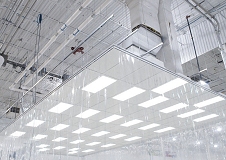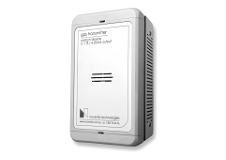Indoor Air Quality and Corona Virus
People typically spend 90% of their time indoors. Concern over human exposure to the pollutants found indoors, and their potentially adverse effects on the health, productivity, comfort and well-being of occupants, is growing. Carbon dioxide is one of the greatest variables affecting indoor air quality since it is produced by people occupying the building and is also a good indication of the general level of the other pollutants within buildings.
A portable or fixed Carbon Dioxide detector could be used to check on the indoor air quality and help to fight coronavirus transmission. According to The American Society of Heating, Refrigerating and Air-Conditioning Engineers (ASHRAE), the recommended CO2 level in buildings should be no more than 700 parts per million (ppm) above outdoor air. Since outdoor air is approximately 450 ppm, indoor CO2 levels should not exceed more than 1,150 ppm. Note that this guideline is not designed to limit the amount of CO2, but rather to indicate that a proper level of clean air is being distributed in indoor spaces.
Daily average Carbon dioxide levels consistently higher than 1,500 ppm are harmful to concentration and health, both of which can have a negative impact on academic performance. CO2 levels can reach 2,000 ppm for no more than 20 consecutive minutes in a given day. (Reference UK Standard BB 101: Ventilation, thermal comfort and indoor air quality 2018).
Equipment and personnel must therefore be protected against combustible, toxic and flammable gases and asphyxiation at all times. Any laboratory using inert gases such as argon, nitrogen or helium as carrier gases or in cryogenics need to consider some sort of gas detection. More information about laboratory gas detection, follow the links below.
Proper air ventilation can be achieved by:
- Increase the amount of fresh air either by natural or mechanical means
- Deploy portable High-Efficiency Particulate Air (HEPA) filters
- Ensure ventilation systems operate properly
- Monitor air quality using a Carbon Dioxide Detector or VOC monitor.
Efficient Measurement Tool
By utilising a simply Carbon Dioxide detector, indoor air quality can be assured across homes, offices, and classrooms. Noventis stocks and sell a range of carbon dioxide detectors for any and every application. If you have any questions or would like further information, please do not hesitate to contact us.



